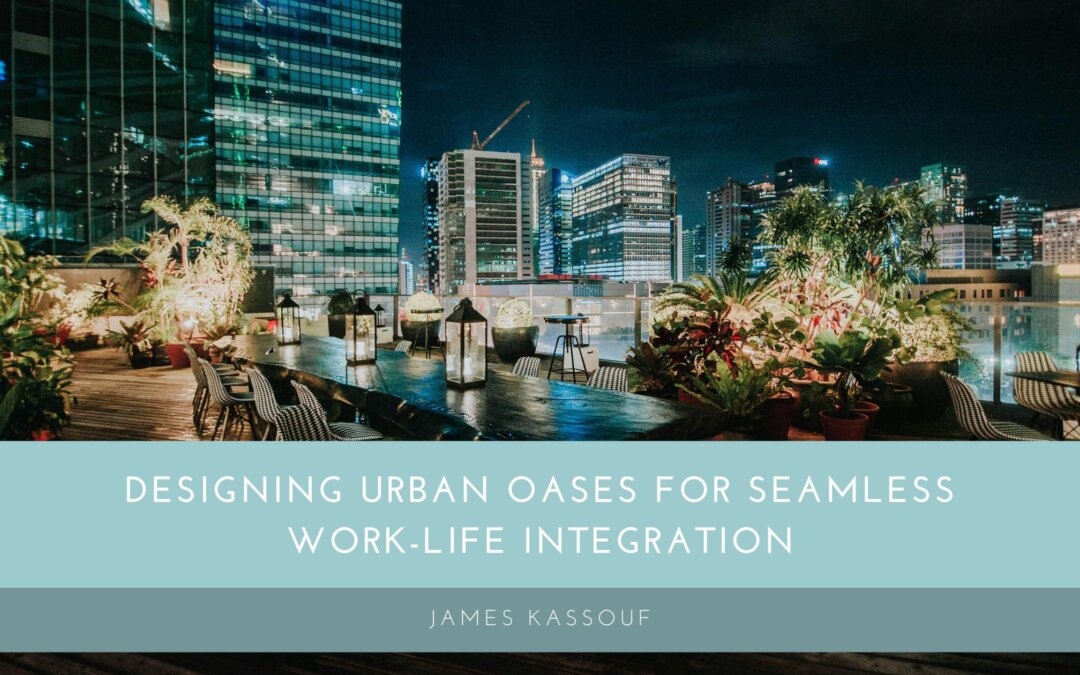The idea of a city haven surfaced as a notion of balance, providing a harmonious combination of work and life amid the busy landscapes of contemporary cities. This architectural and sociological phenomenon is not a mere luxury but a necessity in our increasingly complex urban environments. The essence lies in its ability to provide a sanctuary within the downtown sprawl, a place where professionals can thrive without sacrificing their well-being.
The concept of urban oases has its roots in the growing awareness of the importance of mental health and work-life balance. In the past, cities were primarily designed for efficiency and economic growth, often at the cost of residents’ well-being. High-rise buildings, crowded streets, and the relentless pace of city life left little room for tranquility or relaxation. However, with rising stress levels and an increasing number of mental health issues linked to city living, the need for spaces that cater to both professional productivity and personal relaxation has become clear. Urban retreats respond to this need by integrating natural elements, recreational spaces, and flexible work environments into the urban fabric. These spaces are designed to be accessible, sustainable, and conducive to both work and leisure activities. The transformation from traditional cityscapes to those that include urban tranquility reflects a shift in city planning priorities, where the focus is on creating environments that support a holistic lifestyle.
Architectural Design and Sustainability
The architectural design of urban oases is pivotal in achieving the delicate balance between work and leisure. These spaces are characterized by innovative designs that blend modern architecture with natural elements. Green spaces, water features, and the use of sustainable materials are common aspects. The design process involves creating buildings and landscapes that are not only visually appealing but also environmentally responsible. This includes the implementation of green roofs, energy-efficient systems, and water conservation practices. The architectural layout is planned to promote natural light and airflow, reducing the reliance on artificial lighting and air conditioning. Additionally, the integration of technology is key to ensuring these spaces are adaptable to various professional needs. Flexible workspaces with high-speed internet, collaborative areas, and private pods for focused work are essential features. The goal is to create a setting where professionals can work effectively while enjoying the benefits of a serene, natural environment. This blend of functionality and sustainability in architectural design is crucial in making urban oasis viable solutions for contemporary city challenges.
Psychological and Social Benefits
The presence of natural elements within these spaces, such as plants and water, has a proven positive impact on mental health. Greenery and natural light reduce stress, enhance mood, and increase productivity. These spaces offer a respite from the hectic environment, allowing individuals to decompress and recharge. Socially, oases serve as communal hubs, fostering interactions and building a sense of community among residents and professionals. They provide venues for social events, networking, and collaborative projects, thereby enhancing social cohesion within the urban fabric. These spaces also promote a healthy lifestyle, with areas designated for physical activities and relaxation. The availability of such environments within the city limits makes it easier for individuals to incorporate wellness practices into their daily routines. The psychological and social advantages are integral to their role in facilitating work-life integration, as they address the often-neglected aspect of mental and social health in municipal planning.
Economic Implications
The development has significant economic implications. Firstly, these spaces can increase the value of surrounding real estate, making them attractive investments for developers and city planners. The appeal of a balanced lifestyle can draw more residents and businesses to the area, stimulating local economies. The conducive work environment and the reduction in stress levels lead to higher efficiency and creativity, ultimately benefiting businesses. These spaces also have the potential to become landmarks, attracting tourists and contributing to the city’s cultural and economic vibrancy. However, the initial investment in sustainable materials and technologies can be substantial, and ongoing maintenance of green spaces and facilities is necessary. Despite these costs, the long-term benefits for residents and the local economy make the concept a worthwhile investment.

